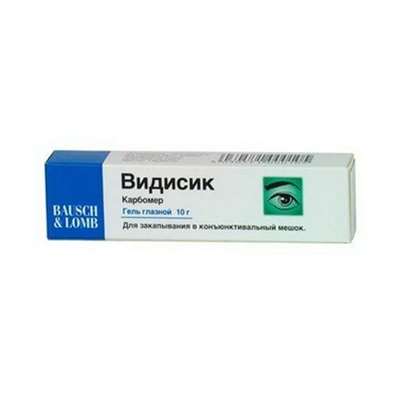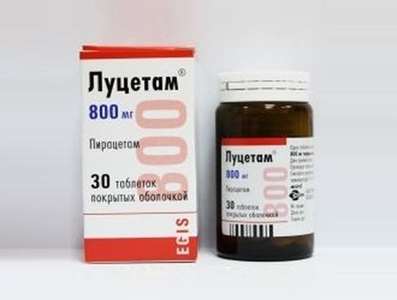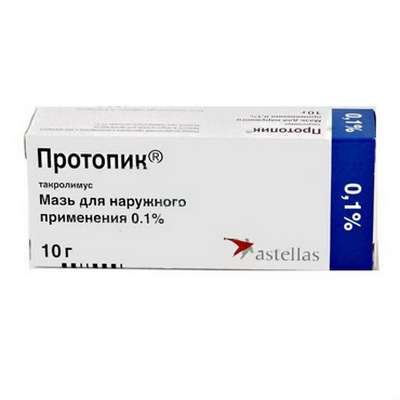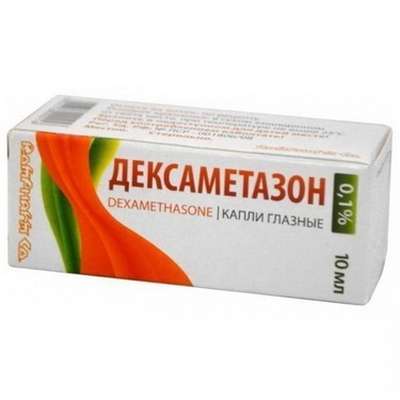Instruction for use: Prosulpin
I want this, give me price
Packing: tablets
Active substance: Sulpiride
ATX
N05AL01 Sulpiride
Pharmacological group:
Neroleptics
The nosological classification (ICD-10)
F05 Delirium not caused by alcohol or other psychoactive substances: Delirious condition
F10.4 Abstinent state with delirium: Alcoholic delirium; White fever alcoholic; Delirium; Delirious condition with alcoholism and drug addiction
F20 Schizophrenia: Schizophrenic Conditions; An exacerbation of schizophrenia; Schizophrenia; Chronic schizophrenia; Dementia praecox; Bleuler's disease; Psychotic discordant; Dementia early; The febrile form of schizophrenia; Chronic schizophrenic disorder; Psychosis of the schizophrenic type; Acute form of schizophrenia; Acute schizophrenic disorder; Cerebral Organic Insufficiency in Schizophrenia; Acute attack of schizophrenia; Schizophrenic psychosis; Acute schizophrenia; Sluggish schizophrenia; Sluggish schizophrenia with apathoabulic disorders; Acute stage of schizophrenia with agitation
F32 Depressive episode: Adynamic subdepression; Astheno-adynamic subdepressive states; Asthenoadressive disorder; Astheno-depressive disorder; Asthenodepressive state; Astheno-depressive state; Major Depressive Disorder; Vyaloapatichesky depression with retardation; Double Depression; Depressive pseudodement; Depressive illness; Depressive mood disorder; Depressive disorder; Depressive mood disorder; Depressive state; Depressive disorders; Depressive syndrome; Depressive syndrome larviated; Depressive syndrome in psychoses; Depressed masks; Depression; Depression Depletion; Depression with the phenomena of inhibition within the framework of cyclothymia; Depression is smiling; Involutional depression; Involutionary melancholy; Involutional depression; Manic-depressive disorder; Masked Depression; Melancholic Attack; Neurotic depression; Neurotic depression; Shallow Depression; Organic depression; Organic depressive syndrome; Simple depression; Simple melancholic syndrome; Psychogenic depression; Reactive depression; Reactive depression with moderate psychopathological symptoms; Reactive depressive states; Reactive depression; Recurrent depression; Seasonal depressive syndrome; Severostatic depression; Senile Depression; Symptomatic Depression; Somatogenic depression; Cyclotymic depression; Exogenous depression; Endogenous depression; Endogenous Depressive Conditions; Endogenous Depression; Endogenous depressive syndrome
F33 Recurrent depressive disorder: Major depressive disorder; Secondary depression; Double Depression; Depressive pseudodement; Depressive mood disorder; Depressive disorder; Depressive mood disorder; Depressive state; Depressive syndrome; Depressed masks; Depression; Depression is smiling; Involutional depression; Involutional depression; Masked Depression; Melancholic Attack; Reactive depression; Reactive depression with moderate psychopathological symptoms; Reactive depressive states; Exogenous depression; Endogenous depression; Endogenous Depressive Conditions; Endogenous Depression; Endogenous depressive syndrome
F48 Other neurotic disorders: Neurosis; Neurological diseases; Neurotic disorders; Neurotic condition; Psychoneurosis; Anxious-Neurotic Conditions; Chronic neurotic disorders; Emotional reactive disorders
F84.0 Childhood Autism: Autism; Autism children; Autism early childhood; Kanner's syndrome; Early Childhood Autism
F91 Behavioral disorders: Juvenile and other behavioral disorders; Destructive behavior; Violation of behavior; Behavior Disorders; Mixed behavioral disorders; Behavioral Disorder; Behavioral disorder in adolescents with 15 years of age and adults; Violations in behavior; Behavioral disorders in childhood; Behavioral disorders in old age; Behavioral disorders in children; Behavioral disorders in children
R45.1 Anxiety and agitation: Agitation; Anxiety; Explosive excitability; Internal stimulation; Excitability; Excitation; Excitation acute; Psychomotor agitation; Hyperexcitability; Motor excitement; Cessation of psychomotor agitation; Nervous excitement; Restlessness; Night trouble; Acute stage of schizophrenia with agitation; Acute mental agitation; Paroxysm of excitation; Overexcitation; Increased excitability; Increased nervous excitability; Increased emotional and cardiac excitability; Increased agitation; Mental arousal; Psychomotor agitation; Psychomotor agitation in psychoses; Psychomotor agitation of an epileptic nature; Psychomotor paroxysm; Psychomotor fit; Symptoms of Excitation; Symptoms of psychomotor agitation; The state of agitation; A state of anxiety; Excitation status; A state of heightened concern; The state of psychomotor agitation; Conditions of anxiety; Excitation conditions; The state of excitement in somatic diseases; Excitation level; Feelings of anxiety; Emotional arousal
Composition and release form
Tablets 1 table.
Sulpiride 50 mg; 200 mg
auxiliary substances: potato starch; lactose monohydrate; silicon dioxide colloidal; hypromellosis K4M; hypromellose K15M (for tablets 200 mg); magnesium stearate; talc
in a blister of 10 pcs .; in a pack of cardboard 3 blisters.
Description of dosage form
Round, flat pills of white or almost white color with a risk on one side
Pharmachologic effect
Pharmacological action - neuroleptic, timolepticheskoe, psihostimuliruyuschee.
Pharmacodynamics
Sulpiride is the most famous representative of the neuroleptics of the benzamide group. Has moderate neuroleptic activity in combination with stimulating and thymoanaleptic (antidepressant) action.
Neuroleptic effect is associated with dopamine-blocking action. In the central nervous system, sulpiride blocks predominantly dopaminergic receptors of the limbic system, and affects the neostriatic system only slightly. Has antipsychotic effect. The peripheral action of sulpiride is based on oppression of presynaptic receptors. With an increase in the content of dopamine in the central nervous system associated with improved mood, with a decrease - the development of symptoms of depression.
The antipsychotic effect of sulpiride is manifested in doses of more than 600 mg / day, in doses up to 600 mg / day, the stimulating and antidepressant effect predominates.
Sulpiride does not significantly affect adrenergic, cholinergic, serotonin, histamine, and GABA receptors.
Pharmacokinetics
When administered inside Cmax in blood plasma is achieved after 3-6 hours and is 0.73 mg / l with the use of one tablet containing 200 mg and 0.25 mg / L for one tablet containing 50 mg.
The biological availability of dosage forms intended for oral administration is about 25-35% and is characterized by significant individual variability. Sulpiride has a linear kinetics after taking doses in the range of 50 to 300 mg.
Sulpiride diffuses rapidly into the body tissues: apparent Vss - 0,94 l / kg. Binding to plasma proteins is approximately 40%. It penetrates into erythrocytes through passive diffusion, its concentration in plasma and erythrocytes are commensurable. The concentration of sulpiride in the cerebrospinal fluid is low and averages about 13% (4-29%) of the serum concentration. Rapidly penetrates the liver and kidneys, more slowly - into the brain tissue (the main amount of the drug accumulates in the pituitary gland). The concentration of sulpiride in the CNS is 2-5% of the concentration in the plasma. Penetrates through the placental barrier. Minor amounts of sulpiride appear in breast milk.
Sulpiride in the human body is only slightly exposed to metabolism and is excreted by the kidneys almost unchanged by glomerular filtration (92%), and the residue is eliminated with excrement. Plasma T1 / 2 is 7 hours. With breast milk, 0.1% of the daily dose is excreted. The total plasma clearance of sulpiride reaches 90-126 ml / min, with the kidney clearance reaching a bit lower values than the total plasma clearance.
Indications of the preparation Prosulpin
As a monotherapy or in combination with other psychotropic drugs:
acute and chronic schizophrenia;
acute delirious states;
depression of various etiologies;
neurosis and anxiety in adult patients with ineffective conventional treatments (only for tablets 50 mg);
severe behavioral disorders (agitation, self-mutilation, stereotypy) in children over the age of 6, especially in combination with autism syndromes (only for 50 mg tablets).
Contraindications
hypersensitivity to sulpiride or other component of the drug;
Prolactin-dependent tumors (eg prolactinoma of the pituitary gland and breast cancer);
hyperprolactinemia;
acute poisoning with alcohol, hypnotics, narcotic analgesics;
affective disorders, aggressive behavior, manic psychosis;
pheochromocytoma;
the period of breastfeeding;
children under 18 years of age (for tablets 200 mg);
children under 6 years of age (for tablets 50 mg);
in combination with:
- sultopride;
- antagonists of dopamine receptors: amantadine, apomorphine, bromocriptine, cabergoline, entacapone, lizard, pergolide, pyribedil, pramipexole, quinagolide, ropinirole (see section "Interaction").
Carefully
It is not recommended to prescribe sulpiride to pregnant women, except when the doctor, having estimated the ratio of benefit and risk to the pregnant and fetus, decides that the use of the drug is necessary.
It is not recommended to prescribe sulpiride in combination with alcohol, levodopa, drugs that can cause ventricular arrhythmias of the "torsade des pointes" type: antiarrhythmic agents of Ia class (quinidine, hydroquinidine, disopyramide) and class III (amiodarone, sotalol, dofetilide, ibutilide); Some neuroleptics (thioridazine, chlorpromazine, levomepromazine, trifluoperazine, cyamemazine, amisulpride, tiaprid, pimozide, haloperidol, droperidol); other drugs such as bepridil, cisapride, difemanyl, iv erythromycin, misolastine, w / k vinamine, halofantrine, pentamidine, sparfloxacin, moxifloxacin, etc.
Due to the presence of lactose in the formulation, sulpiride is contraindicated in congenital lactase deficiency, lactose intolerance, glucose-galactose malabsorption.
Precautions should be taken in the administration of sulpiride to patients with renal and / or hepatic insufficiency, a history of malignant neuroleptic syndrome (SNS), epilepsy or seizures in history, severe heart disease, hypertension, Parkinson's syndrome / disease, dysmenorrhea, .
Application in pregnancy and lactation
Experiments on animals have not revealed a teratogenic effect. A small number of women taking low doses of sulpiride during pregnancy (about 200 mg / day) had no teratogenic effect. There is no data on the use of higher doses of sulpiride. There is also no evidence of the potential effect of neuroleptic drugs taken during pregnancy on the development of the fetal brain. Therefore, as a precautionary measure, it is preferable not to use sulpiride during pregnancy.
However, in the case of using this drug during pregnancy, it is recommended, as far as possible, to limit the dose and duration of treatment. In newborns whose mothers received long-term treatment with high doses of neuroleptics, gastrointestinal symptoms (bloating, etc.), associated with the m-holin-blocking effect of certain drugs, were rarely observed, especially in combination with antiparkinsonian drugs, and extrapyramidal syndrome.
With prolonged treatment of the mother or the use of high doses, as well as in the case of the appointment of the drug shortly before the birth, it is reasonable to monitor the activity of the nervous system of both the mother and the newborn.
The drug penetrates into breast milk, so you should stop taking the drug during breastfeeding.
Side effects
From the side of the central nervous system: sedative effect, drowsiness, dizziness, tremor, early dyskinesia (spasmodic torticollis, oculogic crises, trismus), which occurs when central m-holinoblokatorov; rarely - extrapyramidal syndrome and related disorders: akinesia, sometimes combined with muscle hypertonia and partially eliminated in the appointment of central m-holinoblokatorov, hyperkinesia-hypertonus, motor excitation, akathisia.
There are cases of late dyskinesia characterized by involuntary rhythmic movements, mainly of the language and / or person with long-term courses of treatment, which can be observed during treatment courses with all neuroleptics: the use of antiparkinsonian drugs is ineffective or can cause symptoms worsening.
With the development of hyperthermia, the drug should be discarded. an increase in body temperature may indicate the development of a malignant neuroleptic syndrome.
From the endocrine system: it is possible to develop reversible hyperprolactinemia, the most frequent manifestations of which are galactorrhea, amenorrhea, dysmenorrhea; less often - impotence and frigidity.
During treatment with sulpiride, there may be increased sweating, an increase in body weight.
On the part of the digestive system: increased activity of liver enzymes.
From the CVS: tachycardia, it is possible to increase or decrease blood pressure; in rare cases, the development of orthostatic hypotension, prolongation of the QT interval; very rare cases of the syndrome "torsade des pointes".
From the blood and lymphatic systems: hemolytic anemia, aplastic anemia, leukocytosis, thrombocytopenic purpura, granulocytosis.
Allergic reactions: a skin rash is possible.
Interaction
Contraindicated combinations
Dopamine receptor agonists (amantadine, apomorphine, bromocriptine, cabergoline, entacapone, lizard, pergolide, pyribedil, pramipexole, quinagolide, ropinirole), in addition to patients with Parkinson's disease
Between the agonists of dopamine receptors and neuroleptics there is mutual antagonism. In extrapyramidal syndrome, induced by neuroleptics, do not use dopamine receptor agonists; In such cases, anticholinergics are used.
Sulphopride
Increased risk of ventricular arrhythmias, in particular, atrial fibrillation.
Not recommended combinations
Drugs capable of causing ventricular arrhythmias of the "torsade des pointes" type: antiarrhythmic agents of the Ia class (quinidine, hydroquinidine, disopyramide) and class III (amiodarone, sotalol, dofetilide, ibutilide), some antipsychotics (thioridazine, chlorpromazine, levomepromazine, trifluoperazine, cyamemazine, amisulpride, thiapride, haloperidol, droperidol, pimozide) and other drugs such as bepridil, cisapride, difemanyl, iv erythromycin, misolastine, w / vinamine etc.
Alcohol
Alcohol enhances the sedative effect of neuroleptics. Violation of attention creates the danger for driving vehicles and working with mechanisms that require increased attention. Avoid the consumption of alcoholic beverages and the use of medications containing alcohol.
Levodopa
Mutual antagonism between levodopa and antipsychotics. Patients with Parkinson's disease should be prescribed a minimum effective dose of both drugs.
Dopamine receptor agonists (amantadine, apomorphine, bromocriptine, cabergoline, entacapone, lizard, pergolide, pyribedil, pramipexole, quinagolide, ropinirole) in patients with Parkinson's disease
Between the agonists of dopamine receptors and neuroleptics there is mutual antagonism. The above drugs can cause or exacerbate psychosis. If neuroleptic treatment is necessary for a patient with Parkinson's disease and receiving an antagonist of dopamine receptors, the dose of the latter should be gradually reduced to cancellation (sudden cancellation of dopamine receptor agonists may lead to the development of a malignant neuroleptic syndrome).
Halofantrine, pentamidine, sparfloxacin, moxifloxacin
The risk of ventricular arrhythmias increases, in particular, "torsade des pointes". If possible, antimicrobial medication that causes ventricular arrhythmia should be discarded. If combinations can not be avoided, first check the QT interval and ensure ECG monitoring.
Combinations that require caution
Drugs that cause bradycardia (DCC with bradycardic action: diltiazem, verapamil, beta adrenoblockers, clonidine, guanfacine, cardiac glycosides, cholinesterase inhibitors: donepezil, rivastigmine, tacrine, ambenonium chloride, galantamine, pyridostigmine bromide, neomycin methyl sulfate
The risk of ventricular arrhythmias increases, in particular, "torsade des pointes". It is recommended to carry out clinical and cardiographic monitoring.
Drugs that reduce the concentration of potassium in the blood (potassium-withdrawing diuretics, laxative stimulant, amphotericin B (IV), GCS, tetracosactide
The risk of ventricular arrhythmias increases, in particular, "torsade des pointes". Before prescribing the drug, hypokalemia should be eliminated, clinical and cardiographic control should be established, and the concentration of electrolytes should be monitored.
Combinations that should be taken into account
Antihypertensive drugs
Strengthening the hypotensive effect and increasing the possibility of postural hypotension (additive effect).
Other drugs that depress the central nervous system: morphine derivatives (narcotic analgesics, antitussives and substitution therapy), barbiturates, benzodiazepines and other anxiolytics, hypnotics, sedatives, antidepressants, sedative blockers of H1-histamine receptors, central action hypotensive drugs, baclofen, thalidomide
Oppression of the central nervous system. Violation of attention creates the danger for driving vehicles and working with mechanisms that require increased attention.
Sucralfate, antacid agents containing Mg2 + and / or A13 +, reduce the bioavailability of oral dosage forms by 20-40%. Sulpiride should be prescribed 2 hours prior to admission.
Dosing and Administration
Inside, 1-3 times a day, squeezed a small amount of liquid, regardless of food intake. It is not recommended to take the drug in the afternoon (after 16 hours) due to increased levels of activity.
The goal of therapy is to achieve a minimally effective dose.
Tablets 200 mg
Acute and chronic schizophrenia, acute delirious psychosis, depression: daily dose is from 200 mg to 1000 mg, divided into several receptions.
50 mg tablets
Neuroses and anxiety in adult patients: the daily dose is 50 to 150 mg for 4 weeks maximum.
Severe behavioral disorders in children older than 6 years: daily dose is from 5 to 10 mg / kg body weight.
Doses for the elderly: the initial dose should be 1 / 4-1 / 2 doses for adults.
Doses for patients with impaired renal function. Due to the fact that up to 92% of sulpiride is excreted from the body through the kidneys, it is recommended to reduce the dose of sulpiride and / or to increase the interval between taking individual doses of the drug depending on the creatinine clearance values (see Table):
| Creatinine clearance, ml / min | The dose of sulpiride,% of standard | Increase the interval between doses |
| 30–60 | 70 | 1,5 times |
| 10–30 | 50 | 2 times |
| <10 | 34 | 3 times |
Overdose
Symptoms. Experience with an overdose of sulpiride is limited. Specific symptoms are absent, can be observed: dyskinesia with spastic torticollis, protrusion of the tongue and trismus, blurred vision, increased blood pressure, sedation, nausea, extrapyramidal symptoms, dry mouth, vomiting, increased sweating and gynecomastia, possibly ZNS development. Some patients have parkinsonism.
Treatment. Sulpiride is partially excreted in hemodialysis. Due to the absence of a specific antidote, symptomatic and supportive therapy should be used with careful monitoring of respiratory function and constant monitoring of cardiac activity (risk of prolongation of the QT interval), which should continue until the patient fully recovered; holinoblokatory central action is prescribed in the development of severe extrapyramidal syndrome.
Special instructions
Malignant neuroleptic syndrome: with the development of hyperthermia of the unexplained etiology, sulpiride should be discontinued, this may be one of the signs of a malignant neuroleptic syndrome described with the use of neuroleptics (pallor of skin, hyperthermia, autonomic dysfunction, impaired consciousness, rigidity of muscles).
Signs of autonomic dysfunction, such as: increased sweating and labile blood pressure may precede the onset of hyperthermia, and therefore represent early warning signs. Although such an effect of neuroleptics may have an idiosyncratic origin, it appears that some of the risk factors may predispose to it, for example, dehydration or organic brain damage.
Increase in the QT interval: Sulpiride prolongs the QT interval depending on the dose. This action, which is known to increase the risk of developing such a serious ventricular arrhythmia as "torsade des pointes", is more pronounced in the presence of bradycardia, hypokalemia or congenital, or acquired prolonged QT interval (combination with the drug eliciting the QT interval). If the clinical situation allows, it is recommended, prior to the appointment of the drug, to be convinced of the absence of factors that may contribute to the development of this type of arrhythmia:
- a bradycardia with a heart rate of less than 55 beats per minute;
- hypokalemia;
- congenital extension of the QT interval;
- simultaneous treatment with a drug that can cause pronounced bradycardia (less than 55 beats / min), hypokalemia, slow intracardiac conduction or prolongation of the QT interval.
Except in cases of urgent intervention, patients requiring treatment with neuroleptics are advised to conduct an electrocardiogram during the status assessment. In exceptional cases, this drug should not be used in patients with Parkinson's disease.
In patients with impaired renal function, reduced doses of sulpiride should be used and control enhanced; In severe forms of renal failure, intermittent courses of treatment are recommended.
Control during treatment with sulpiride should be strengthened:
- in patients with epilepsy, tk. the convulsive threshold can be reduced;
- in the treatment of elderly patients who are more sensitive to postural hypotension, sedation and extrapyramidal effects.
During the treatment with the preparation of Prosulpin®, it is forbidden to drive vehicles and work with mechanisms requiring increased attention, as well as taking alcohol or using drugs containing alcohol.
Conditions of leave from pharmacies
On prescription.
Storage conditions for Prosulpin
In dry, the dark place at a temperature of 15-25 ° C.
Keep out of the reach of children.
Shelf life of Prosulpin
4 years.
Do not use after the expiry date printed on the package.

 Cart
Cart





